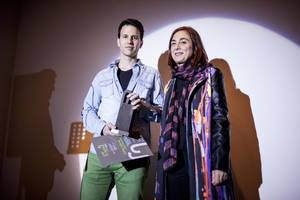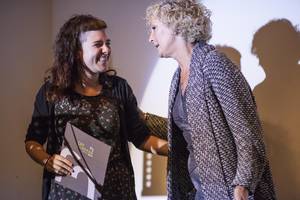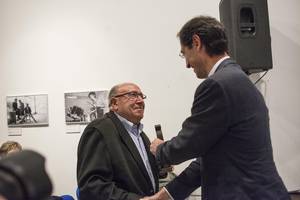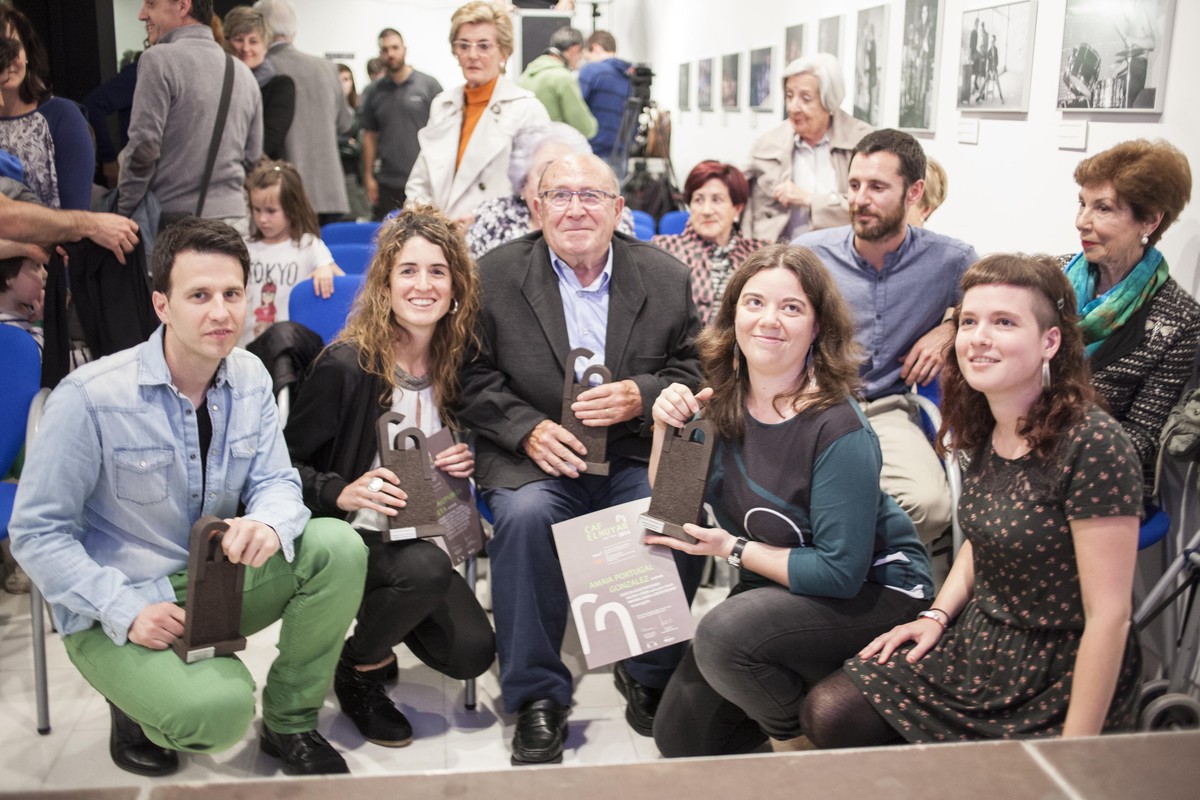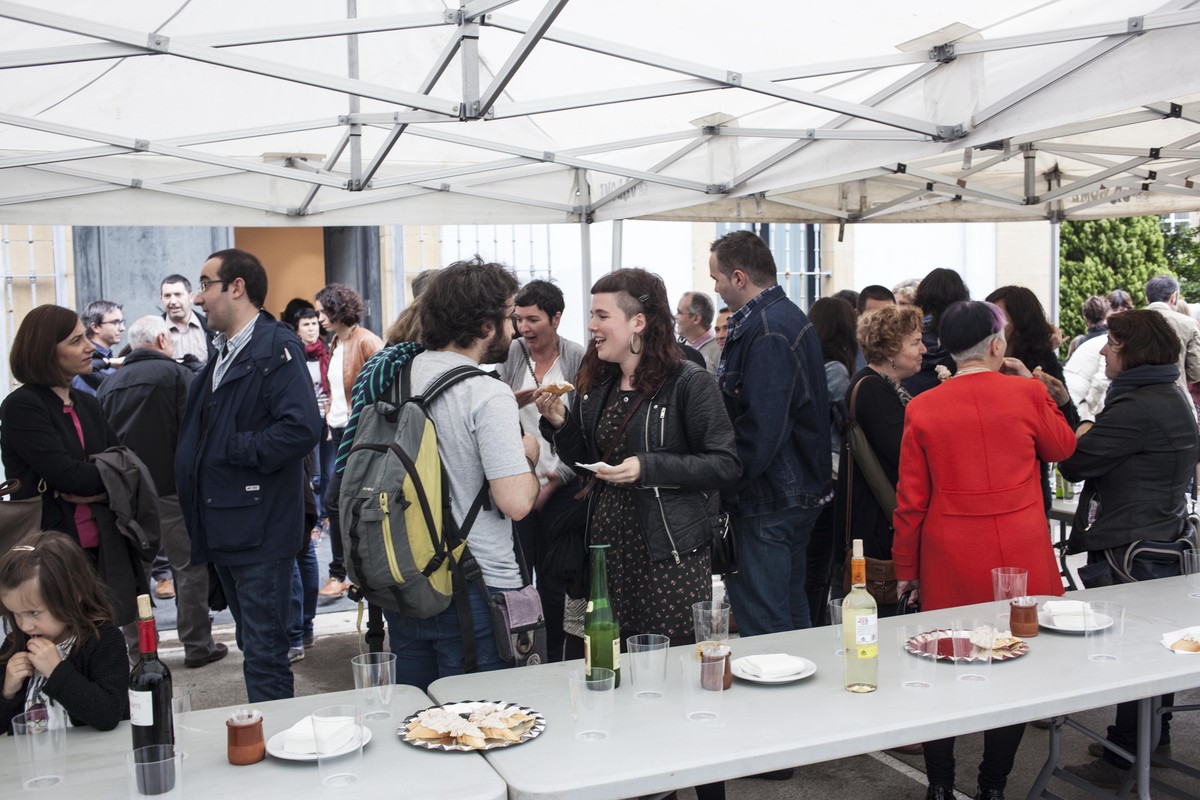Today the CAF-Elhuyar 2014 awards are presented
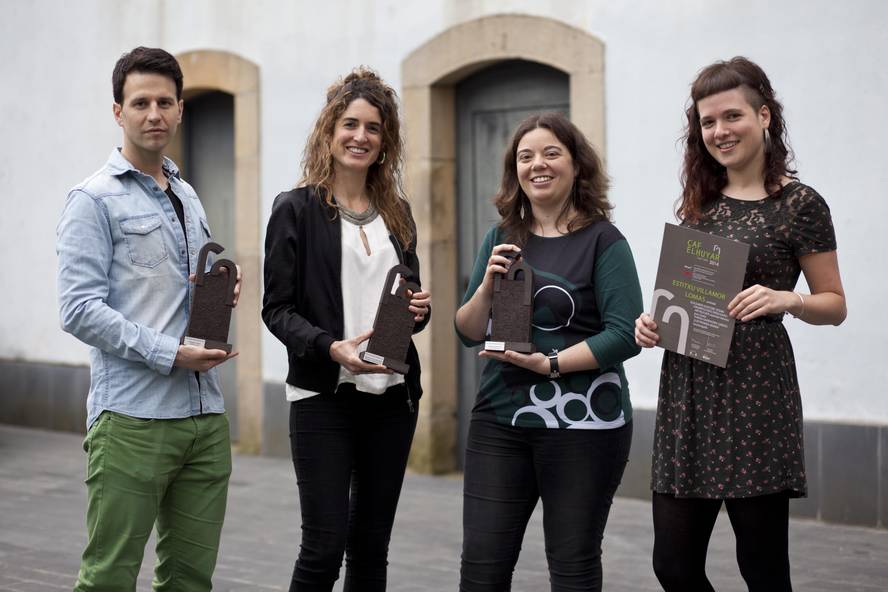
Award-winning and award-winning works
--> General informative article: “Small virtual brains”, Gorka Azkune Galparsoro --> Informative article based on the author’s doctoral thesis: “History of the flying hunter who became a fisherman”, Ostaizka Aizpurua Arrieta --> Informative article based on the author’s doctoral thesis, special mention: “New electronics without cargo transport”, by Estitxu Villamor Lomas --> Scientific journalism work: "Minimalism in the laboratory", Amaia Portugal González (published in the newspaper Berria) --> Merit: Related information
Give light to your work
The Museum of Photography and Cinema Photomuseum in Zarautz today hosted, from six in the afternoon, the ceremony of the CAF-Elhuyar 2014 awards. The last edition of the contest has joined the International Year of Light, with the slogan “Give light to your work”. Precisely, light has guided this edition: The wise Ibn Al-Haytham and the books of Optics he wrote a thousand years ago, Berenice Abbott, a science photographer at MIT, and the lumistic sounds of Xabi Erkizia, illuminate the Photomuseum of Photography and Cinema in Zarautz as the presenter of the event, Iñaki Leturia, has unveiled the awards.
--> Photo gallery
--> Teknopolis: report on the CAF-Elhuyar awards
Journalism: minimalism in the laboratory
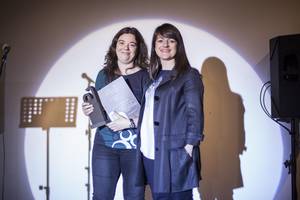
Journalist Amaia Portugal González has received the award for the best work of scientific journalism, thanks to the report “Minimalism in the laboratory” published in Berria. The report includes a session to answer the question of which genes can be eliminated to a living being and how it would work by eliminating them and, according to the jury, Portugal has done a good job from the title that meets all the criteria of journalism: “The chosen topic is attractive in itself, but also technical, so you have to take into account the incorporation of a dictionary to help the reader,” they stress.
Last year, the jury made a special mention of the journalistic work of the Donostiarra and this year her work has been awarded the Grand Prix. In the award ceremony, in addition to thanking Elhuyar for his work in the socialization of science, he criticized the criteria of the Basque Government in media subsidies. In his opinion, “the specimens do not measure the work done by the Basque industry.
In total, in the 2014 edition, 8 works have been received in this category.
Disclosure: small virtual brains, flying hunters turned fishermen and new electronics
In the category of outreach articles there have been three winners in this edition: Gorka Azkune Galparsoro, Ostaizka Aizpurua Arrieta and Estitxu Villamor Lomas.
The first, computer engineer, is not new to the contest, since last year was the winner of the best article of general disclosure. The award-winning article this year is titled “Virtual Small Brain” and Azkune focuses on strategies for teaching artificial neural networks.
In the opinion of the jury, “he works with great dexterity on a current topic, making the examples right.” The jury has stressed to the Azpeitiarra that at the end of the article looks towards the future, “what the investigative spirit of the author means”, he stressed. In fact, Azkune is, in addition to an expert informer, an artificial intelligence researcher at Deusto Tech.
When collecting the prize, Azkun stressed that this time he has won the prize with a work on a subject of his area, since on previous occasions they were of physical type, “and I, although I like physics a lot, I am not physical but computer”. In addition, he praised the value of basic science, explaining that the virtual brains referred to in the article have been developed thanks to a "crazy" idea of basic science.
The other two have received the award in the category of outreach articles based on the author's doctoral thesis and the Special Mention, respectively. Biologist Ostaizka Aizpurua Arrieta has been the winner of the award for best article thanks to the account of her research work on bat bone. “The story of the flying hunter who became a fisherman” is the title of this article that has described the jury as brilliant.
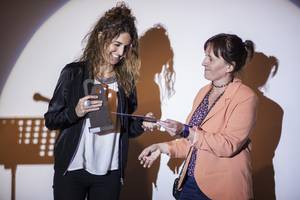
The jury praised that zarauztarra, due to its natural appeal, has not plummeted and added that in addition to being written correctly, the article clearly shows the contribution of the researcher of the UPV/EHU. “The writing and tone of the text are adequate and the author transmits his passion for the subject”, they have also affirmed the effort made to complete the information with photographs and graphics has allowed “the reader can know at first sight the reason for the work”.
When he picked up the prize in his hands, he humorously commented on the paradox between his work and the prize slogan: “To investigate the bats I have been four years of night, always in the dark, and now you have given me light.” He also considered his relatives, who in part wrote the article for them. “A year ago, when I submitted the thesis, they were three hours listening to my explanations in English!” he then promised that he had to be told in Basque and understandably.
Physicist Estitxu Villamor Lomas has received a Special Mention from the jury. The article is entitled “New electronics without freight transport” and refers to spintronics. The Vitorian is a researcher in the area of nanodevices of CIC Nanogune and has completed his doctorate at the University of the Basque Country. Precisely because the area investigated by Villamor is very technical in itself, the jury has considered that the effort of the author is worthy of mention “to explain the subject in an understandable and attractive way, and to bring a topic that for many can be distant”.
Along with gratitude, Villamor calls for reflection: “We have to think about what and why we investigate, what interest and act responsibly.”
In the category of dissemination articles the jury has selected among 28 works, highlighting in general the quality of the articles presented. The jury that has evaluated the journalistic work and the articles of dissemination has been composed of: Arturo Elosegi, ecologist, researcher at the UPV and scientific disseminator; Marian Iriarte, chemist, researcher at the UPV and science disseminator; Uxune Martinez, manager of the scientific database Inguma of the UEU; Alberto Barandiaran, journalist and director of the EPA; and Leire Canhucio, director general of Elhucio.
No prize in the creation fellowship in Science Society
Unlike other categories, the quality of the projects presented to the creation scholarship in Science Society has not been as high as in previous editions, so the jury has decided to declare it deserted. “Few proposals have been submitted and none met all the criteria that the jury values,” they said. For this reason, after many doubts and with great sorrow, the film director Koldo Almandoz, the director of the Department of Art and Technology of the UPV/EHU Josu Rekalde and the head of the Science Unit Elhuyar, María Gil, have decided to leave behind the award of this category.
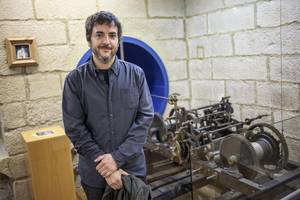
However, the organization has taken the opportunity to encourage creators to present their projects in the next edition, as thanks to the scholarship they can receive a good boost. An example of this is the scholarship project last year, entitled “Silent Scriptures” by Xabi Erkizia. Erkizia has worked throughout the year and today opened a sample of this work at the Zarautz Museum of Art and History.
It will be available until the end of May, Thursday, Friday, Saturday and Sunday.
Dr. Julián Bereziartua Award
To conclude the event, the president of Elhuyar, Txema Pitarke, has awarded the Elhuyar Award to the doctor Julián Bereziartua Barrenetxea. The Elhuyar Prize recognizes its trajectory in the normalization of Basque and in the socialization of science. Bereziartua has worked extensively on the normalization of Basque in the medical field, as well as on medical outreach.
Azpeitiarra, doctor and surgeon, has made a long and varied professional career. He has worked at Osakidetza for 44 years and has had his own general medicine practice until he was 73 years old. “In this long career, Elhuyar has awarded the Award of Merit to the patient (at work) and to society (in the media) for his effort to disseminate health knowledge in Basque and in an understandable way”, by the hand of its president Txema Pitarke.



